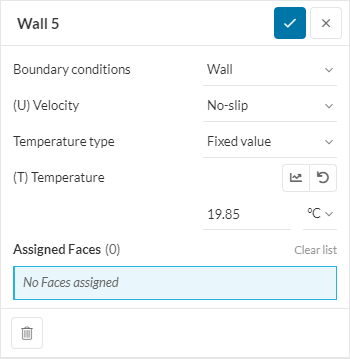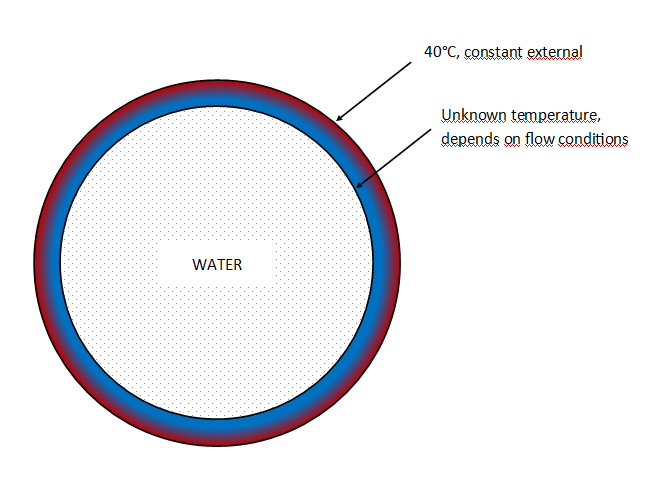Hi everyone,
I need some help.
I am simulating Conjugate heat transfer.
So, In Advanced concepts - Power sources - Absolute Power Sources: I can give heat power (W),
but can I give a heat by Celsius Temperature?
I could not find temperature feature.
Hi, and thanks for using the forum!
A fixed temperature is applied with a wall boundary condition:

1 Like
Thanks for reply.
So, it means, I can use wall boundary conditions to give heat on the surface of my pipe?
Yes,
Although this is not completely realistic, a fixed temperature boundary conditions basically means a heat source (or sink?) with infinite energy, delivered at a constant temperature.
1 Like
Thanks for support.
However, why then, in all the tutorial videos, people used absolute power source to give temperature on the surface of body?
Hi, you are welcome!
Applying a power source is just a different model approach than applying a fixed temperature. The results are different also, as the surface with power source will not have a constant temperature value, and the distribution will depend on the environment.
I want to simulate heat transfer. So which one is it better for me to apply?
I want to apply 40 C temperature on the surface of pipe and if inlet 2m/s water, then how much water can decrease the 40 C temperature to …
It is my objective. it might be decreased to 30 C or even 25 C.
I want to see decreasing process.
If you apply a fixed temperature to the surface of the pipe, then you will not be able to see how much it goes down, because it will be constant.
What you will create is a temperature gradient across the thickness of the pipe:

As for the temperature decreasing ‘process’, to get the evolution you would perform a transient simulation. But that is not very practical. With the steady-state simulation, you get instead the stabilized results.
2 Likes


